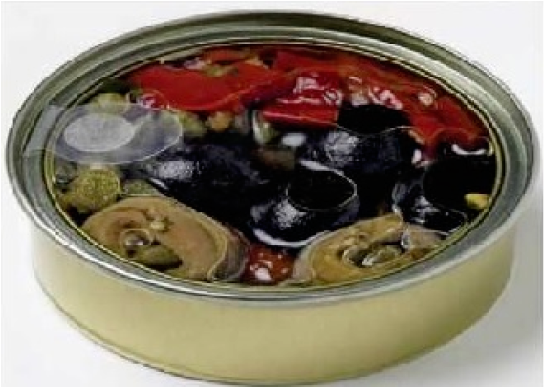The European Court of Justice has issued an important decision for the packaging industry which helps to better define the scope of protection that is granted to packaging and with it, the strategy that should be followed both when preparing the application as well as when assessing the likelihood of success in a case of infringement.
Roaming the supermarket aisles is one of the few forms of entertainment we are allowed in lockdown. On your next trip to stock up, run your eyes over the shelves and you will see a similarity in project packaging that could lead you to mistake the product you usually buy for another one with a suspiciously similar shape, color, typeface and artwork. There is a very fine line between market trends, taking inspiration from the leading product and unlawful copies.
The truth is that the most innovative brands spend thousands of euros on designing attractive packaging to draw in consumers, only to find shortly after that the shelves are full of almost exact copies of their product presentation, just under a different brand name. Should brands resign themselves to the fact that their packaging will be copied? Not always. Innovative designs can be protected in several ways, including industrial designs, copyright and, at times, three-dimensional trademarks.
Usually the quickest way of protecting the appearance of packaging is through an industrial design. At a national or European level, within just a few days you can register a new design, with individual character. One of the characteristics of industrial designs is that the office of registration, in this case the EUIPO, does not look at whether the design actually meets these requirements and simply carries out a practically formal analysis of the actual application. That is, it is very simple to register a design and obtain a presumption of validity, as established in article 85 of Council Regulation (EC) No 6/2002 of 12 December 2001 on Community designs. This is why third parties often request a declaration of invalidity of a design on the grounds that it does not fulfill the requirements as to novelty and individual character and therefore should never have been registered.
In this context, an interesting case to look at is the recent judgment of March 12, 2020 in case T-352/19, Gamma-A Sia v EUIPO in an invalidity proceeding, which assessed the scope of protection afforded by an industrial design in order to determine whether or not it covered the visible contents of the packaging. This is, without doubt, a very important question for the packaging industry. The case involved the following designs:
| Community design no. 2022772-0001 | Earlier design |
 |  |
The CJEU firstly listed the criteria that have to be taken into account when determining whether or not the design has singular character, including:
- the nature of the product in which that design is incorporated, and, in particular the industrial sector to which it belongs, in this case the food packaging industry
- the degree of freedom of the designer in developing the design, which is considered to be broad
- whether there is saturation of the state of the art, which might make the informed user more attentive to the differences in the designs compared
- the manner in which the product concerned is used
In this case, the CJEU considered that the key lies in this last point – the way in which the product is used – and concluded that the design did not meet the individual character requirement. For the CJEU, the fact that the contents of the packaging – canned food – are visible does not confer protection. Consequently, the contents do not have to be taken into account when assessing the appearance of the design in question:
“the fact that the contents of the packaging in which it is intended to be incorporated are visible does not extend the protection conferred on the contested design to those contents. Indeed, the most that can be said concerning the presence of visible foodstuffs in the products in which the contested design is intended to be incorporated is that it provides a better illustration of their purpose, namely as packaging for foodstuffs, as well as one of their components, namely the transparent lid.”
In light of the above, the CJEU concluded that the design in question did not produce a different overall impression from the earlier product and found that the comparison of the contents is irrelevant, even if they are visible. The court therefore concluded that the informed user of the contested design, whether a consumer or a professional in the food-processing industry, will assess that design in accordance with its purpose, i.e. as packaging for foodstuffs, and will be perfectly able to differentiate between that packaging and its contents. Therefore, as we said at the beginning, for the CJEU the crucial aspect is its exterior, since protection is only granted to the container. Consequently, the Decision of the Appeal Division of the EUIPO invalidating community design no. 2022772-0001 was confirmed.
As we said, this is an important decision for the packaging industry since it helps to define the scope of protection that is granted to packaging and, with it, the strategy that should be followed both when preparing the application as well as when assessing the likelihood of success in a case of infringement.
Garrigues Intellectual Property Department






